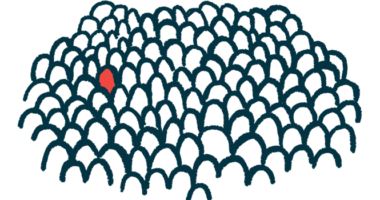Alnylam Announces Potential New Biannual Dosing Regimen for Vutrisiran

Alnylam Pharmaceuticals announced a potential new biannual dosing regimen for vutrisiran, its investigational treatment for familial amyloid polyneuropathy (FAP) and other forms of ATTR amyloidosis.
In its “RNAi Roundtable” webinar, the company also stated that it remains on track to announce top-line data from HELIOS-A (NCT03759379), one of its Phase 3 trials of vutrisiran, in early 2021.
A biannual dosing regimen for vutrisiran may provide “further differentiation to achieve a potential best-in-class profile,” Eric Green, senior vice president and general manager of Alnylam’s TTR Program, said in a press release.
Meanwhile, Alnylam has expanded enrollment in HELIOS-B (NCT04153149), a second Phase 3 trial of vutrisiran, to recruit participants with ATTR amyloidosis and cardiomyopathy (heart disease) at a global scale. Recruitment is now underway at several sites in the U.S., Europe, Australia, and Korea. More information about trial sites is available here.
The company is also on track to complete patient enrollment in APOLLO-B (NCT03997383), a Phase 3 study assessing the efficacy and safety of Onpattro (patisiran) in adults with ATTR amyloidosis and cardiomyopathy, in early 2021. Onpattro was the first RNA-targeted therapy to be approved in the U.S. for the treatment of FAP, also known as hereditary ATTR amyloidosis.
Vutrisiran, formerly known as ALN-TTRsc02, is an RNA-targeted therapy designed to silence the messenger RNA that provides cells with instructions to make transthyretin — the misfolded protein that clumps in amyloid deposits found in people with ATTR amyloidosis.
The investigational therapy received orphan drug designation for the treatment of FAP in both the U.S. and the European Union. More recently, the U.S. Food and Drug Administration also granted fast track designation to vutrisiran as a potential treatment for adults with FAP.
The safety and efficacy of vutrisiran in people with FAP is currently being investigated in two Phase 3 trials that are part of the HELIOS program. In HELIOS-A — which completed patient enrollment earlier this year — participants receive under-the-skin (subcutaneous) injections containing 25 mg of vutrisiran, once every 12 weeks, or Onpattro delivered by intravenous infusions (directly into the bloodstream) every three weeks.
Pharmacological data show that when given twice a year at a dose of 50 mg, vutrisiran is as effective at blocking the production of transthyretin as when given every three months at a lower dose of 25 mg, the company stated. The findings also indicate that vutrisiran’s biannual regimen is as effective as Onpattro.
Based on these results, Alnylam is planning to start working with regulatory authorities to determine the best way to implement this new dosing regimen for vutrisiran.
“We remain committed to developing additional therapeutic options for the treatment of ATTR amyloidosis and driving innovation that can potentially help improve patient outcomes and treatment experience,” Green said.
In addition, new clinical data showed that when given alongside the transthyretin stabilizer diflunisal, Onpattro can reduce the buildup of toxic amyloid deposits in the heart of FAP patients, Alnylam announced at the European Society of Cardiology 2020 Congress.
After one year of treatment with Onpattro, nearly half (45%) of the patients had a significant reduction in the number of amyloid deposits in the heart, according to the study, which was led by investigators at the University College Hospital, in the U.K. These patients also experienced improvements in exercise capacity — assessed by the six-minute walk test — after one year of treatment.
These findings suggest that an RNA-targeted therapy such as Onpattro and a transthyretin stabilizer can work together to reduce the accumulation of the altered protein in the heart.






